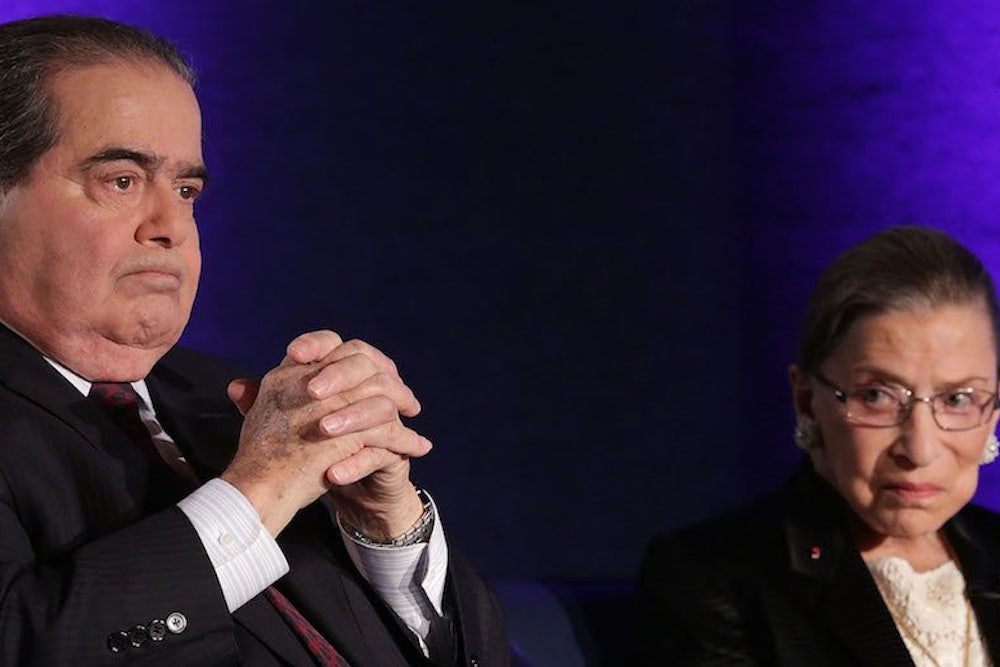Few regulatory battles have gone on as long as the 25 years it's taken for the Environmental Protection Agency to regulate mercury, arsenic and other toxic pollution from large power plants. Before it finally takes effect next month, the EPA's mercury rule will face its final obstacle Wednesday in arguments for Michigan vs. EPA at the Supreme Court.
Hundreds of thousands of people have died because of the delay. While the vast majority of power plants already have the pollution equipment to meet the rule, the regulation in full effect will annually prevent as many as 11,000 premature deaths and 130,000 cases of asthma. A rule that costs $9.6 billion a year will deliver public health benefits up to 10 times as much—worth anywhere between $37 billion and $90 billion—to say nothing of the suffering prevented. The EPA targets coal-fired power plants because the sector is responsible for half of all U.S. mercury emissions and 62 percent of arsenic emissions. On a day to day basis, these emissions can irritate the eyes, skin, and breathing. Over time, they poison the lungs and kidneys and cause birth defects.
There's no doubt of the public health benefits of the mercury rule. The question at the center of the Supreme Court case comes down to a technicality: whether the EPA factored in the costs at the appropriate stage of rulemaking. Michigan and 20 other states challenge that the EPA failed to factor in the nearly $10 billion in costs at the earliest stage, when the EPA decided whether or not to regulate mercury. The states further claim the EPA vastly overestimates the health benefits by including the benefits of reducing particulate matter in its estimate along with mercury and arsenic (a side benefit of the mercury rule would be to lessen particulate matter).
Congress first asked the EPA to decide whether it is "appropriate and necessary" to regulate power plant pollution in an amended version of the Clean Air Act in 1990. Because Congress did not direct the EPA to consider costs at that stage, the EPA has consistently decided to look at costs only at the second stage of rulemaking, when it actually drafts the regulation. “The statue is silent on this question,” said Richard Revesz, director of the New York University Institute for Policy Integrity, who argues in favor of the EPA's process. “It doesn’t say costs have to be taken into account for making that determination.”
Even if the EPA wanted to consider costs at this early point, Revesz said, the exercise would be meaningless. “It wouldn’t be really possible, intellectually, in a sensible way to take costs into account at that stage because costs are dependent on the way the rule is structured," he said. The issue isn't that the EPA overlooked costs entirely: It simply factored in the $10 billion later.
When the law is vague, the courts have typically deferred to federal agencies. The Supreme Court said as much in a landmark case in 1984, Chevron vs. Natural Resources Defense Council. Last year, the court upheld a controversial cross-state air pollution rule, with Justice Ruth Ginsburg writing in the 6-2 opinion, "Under Chevron, we read Congress' silence as a delegation of authority to EPA to select from among reasonable options.” That suggests to EPA defenders that the agency has a strong case. And so far, the rule has survived the legal challenges. It won in the U.S. Court of Appeals for the D.C. Circuit last year against Michigan. Constitutional Accountability Center counsel Tom Donnelly, who filed a brief in support of the rule, said the EPA’s track record defending controversial regulations in the Supreme Court is a sign the agency will prevail.
“It won on cross-state air pollution and the bigger question in greenhouse gas regulations,” Donnelly said. “In both cases it was a cross-ideology coalition of the justices deferring to the EPA’s reasonable interpretation of the statute.”
This regulation has attracted some unusual allies. Some Republican-led states like North Carolina are supporting the EPA, because the states face consequences from weak power plant requirements. They have stronger laws on toxic pollution from power plants, but still suffer from mercury pollution from states that still need to catch up. Industry groups are also on both sides. Most power plants already comply with the rule, and ones that are relatively less coal-reliant like Calpine Corporation and Exelon Corporation support it.
For decades this rule has faced near-constant delays. The Bush Administration's version of the regulation was so weak that states and environmental groups sued, claiming it did not meet the minimum requirements of the Clean Air Act. They won. The regulation was left to the Obama Administration, which proposed a draft rule in 2011. Finally, in 2015, environmentalists and public health groups hope the long battle over mercury pollution will be over.
